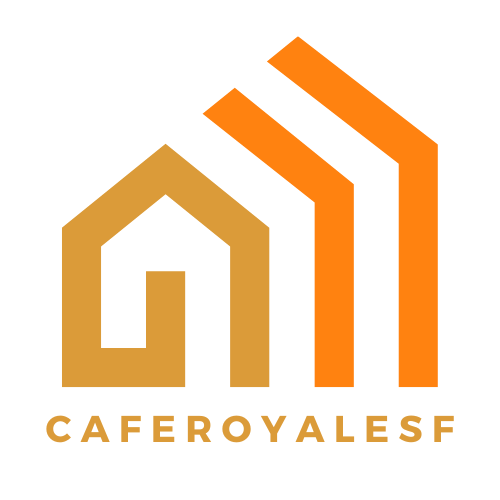Buying a home is a thrilling adventure, but it often feels like a game of Monopoly. You might have the colorful properties in mind, but first, you need to gather those elusive down payment dollars. The down payment is more than just a number; it’s your ticket to the home loan approval rollercoaster.
Imagine strolling into a bank with your down payment ready, like a knight in shining armor, ready to conquer the realm of homeownership. A solid down payment not only boosts your chances of approval but can also lower your monthly payments. So, if you’re ready to ditch the rent and embrace the joys of home sweet home, let’s dive into the ins and outs of down payments and how they can turn your homeownership dreams into reality.
Table of Contents
ToggleImportance Of Down Payment For Home Loan Approval
A down payment plays a critical role in securing home loan approval. This upfront payment helps lenders assess the borrower’s financial stability and commitment to homeownership.
Boosting Approval Odds
Lenders favor borrowers with significant down payments. A larger payment indicates lower risk and encourages lenders to approve applications more readily. Borrowers who provide 20% or more typically experience faster approvals. Those with lower down payments may face stricter requirements, such as higher credit scores or private mortgage insurance. Previous reports show that more than 80% of approved loans feature down payments above 10%. Prioritizing a substantial down payment increases the likelihood of securing that dream home.
Lowering Monthly Payments
Paying a larger down payment leads to lower monthly mortgage payments. Reducing the principal amount borrowed decreases the interest owed each month. For example, a $300,000 home with a 20% down payment translates to a $240,000 mortgage. This significantly lowers monthly obligations compared to a 5% down payment on the same home, which equates to a $285,000 mortgage. More savings monthly creates a healthier financial situation. Generally, a larger down payment not only eases monthly payment burdens but also minimizes long-term interest costs.
Types Of Down Payments

Understanding the various types of down payments helps borrowers choose the right option for their home loan approval. Each category carries unique implications for financial planning and approval processes.
Conventional Loans
Conventional loans usually require a down payment of 5 to 20 percent of the home’s purchase price. Borrowers making a down payment less than 20 percent often incur private mortgage insurance (PMI). Lenders view larger down payments as a sign of financial stability, thus facilitating smoother approvals. Those providing a 20 percent down payment often enjoy lower monthly mortgage payments and avoid PMI altogether. Choosing a conventional loan with an adequate down payment benefits borrowers by enhancing their eligibility for favorable mortgage terms.
Government-Backed Loans
Government-backed loans like FHA, VA, and USDA loans offer various down payment options. FHA loans allow down payments as low as 3.5 percent, supporting first-time homebuyers seeking affordable pathways to homeownership. VA loans can require no down payment for eligible veterans and active-duty service members, promoting access to homeownership without upfront costs. USDA loans, aimed at rural buyers, often feature 0 percent down payments, making them an attractive option for qualifying individuals. Selecting a government-backed loan aligns with specific needs, offering flexibility in down payment requirements and financial assistance potential.
Factors Influencing Down Payment Requirements
Multiple factors determine the required down payment when securing a home loan. Understanding these factors helps buyers navigate the mortgage process effectively.
Loan Types
Loan types significantly impact down payment expectations. Conventional loans necessitate 5 to 20 percent down. Lower percentages may require private mortgage insurance, increasing overall costs. Government-backed loans, such as FHA, VA, and USDA loans, provide more flexible options, often allowing 3.5 percent down for FHA or even zero down for VA and USDA loans. Each loan type has unique requirements that affect borrowers’ financing options and their overall affordability.
Borrower’s Financial Profile
A borrower’s financial profile heavily influences down payment requirements. Lenders evaluate credit scores, debt-to-income ratios, and employment history. Higher credit scores typically correlate with lower down payment requirements. Conversely, those with less favorable financial profiles may need to provide larger down payments or comply with stricter lending terms. These assessments matter for securing competitive interest rates, ultimately impacting the borrower’s long-term financial health.
Strategies To Save For A Down Payment
Saving for a down payment requires intentional planning and resourcefulness. Through effective budgeting and exploring assistance programs, aspiring homeowners can build their savings.
Budgeting Tips
Creating a detailed budget helps identify spending habits and areas for potential savings. Prioritize essential expenses while minimizing discretionary ones. Setting specific savings goals, such as a monthly dollar amount, fosters consistent progress. Use tools like apps or spreadsheets for tracking expenses and savings. Evaluating subscriptions and memberships often reveals unnecessary expenses to cut. Establishing an emergency fund ensures savings won’t be depleted due to unexpected costs. Planning meals at home instead of dining out further increases savings potential. Regularly reviewing and adjusting budgets maintains focus on the down payment goal.
Assistance Programs
Many assistance programs exist to support homebuyers in saving for down payments. Federal Housing Administration (FHA) loans offer lower down payment options, making homeownership more attainable. Veterans Affairs (VA) loans provide eligible veterans with zero down payment opportunities. Additionally, many state and local governments sponsor first-time homebuyer assistance programs, often supplying grants or forgivable loans. Community organizations may also offer workshops to educate buyers on available resources. Researching these programs adds valuable options without straining finances. Utilizing assistance programs enhances prospects of securing a suitable down payment for home loan approval.
Securing a home loan approval hinges significantly on the down payment a borrower can provide. A well-planned down payment not only enhances the chances of approval but also opens doors to better mortgage terms. By understanding the various loan options and their requirements, prospective homeowners can strategically position themselves for success.
Utilizing available resources and assistance programs can further ease the burden of saving. Ultimately, prioritizing a substantial down payment is a vital step in the journey toward homeownership, paving the way for financial stability and long-term benefits. With careful planning and informed decisions, achieving the dream of owning a home becomes a more attainable reality.







